Summer Food – Corn
Te Puna
Atua: Rongomātāne.
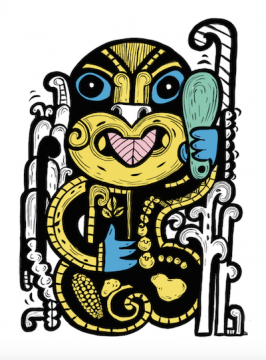
Whakapapa
The whakapapa of Rongomātane.
Rongomātāne Whakapapa (PDF, 49 KB)
Pūrākau
Ngā Kōhine e Toru
Retold by Rā Pōmare, translated by Hēni Jacob.
This story can be found in the book Te Whakatipu Kānga, pages 3–9, (Kai Ora 3 resource kit, 2013, item number 710880).
It is also available as an App or PDF:
http://hana.co.nz/online/te-whakatipu-kanga/
Waiata
Ka Pīoioi
Music and lyrics available:
http://www.folksong.org.nz/ka_pioioi/index.html
Karakia
Nau mai e Rongo
Composed by Nuki Tākao.
"Nau mai e Rongo
Tau mai e Rongo
Tau mai ko te āiō
Tau mai ko te aroha
Tau mai ko ngā hua o te ora
E Rongo whakairia ki runga
Kia tina, tina
Hui e. Tāiki e."
Whakataukī
He kai kei aku ringa.
He Atua! He Kōrero!
Te Whakapapa o Rongomātāne

Ako ā-Kākā
Rote learn the simple whakapapa of Ranginui and Papatūānuku and six of their children.
Ka moe a Ranginui i a Papatūānuku,
ka puta ko Tāwhirimātea, ko Tūmatauenga, ko Tānemahuta, ko Tangaroa, ko Rongomātāne, rātou ko Haumiatiketike.
Rongo is …
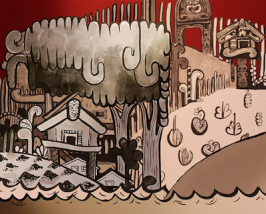
What you need
- ‘Rongo’ pictures from magazines (or other sources)
- White card with ‘Rongo’ words written on them (that match the pictures you’ve sourced)
- Scissors
- Glue or tape
- Felt pens, coloured pencils, crayons
What you do
- Write ‘Rongo’ words onto strips of white card. Possible word list:
-
- Māra kai
- Hua whenua
- Kūmara
- Hua rākau
- Rongomātāne
- Kō
- Kāheru
- Oneone
- Āiō
- Rongo
- Mauri
- Collect pictures that represent Rongo (word list and pictures should match). Possible pictures:
-
- Rongomātāne
- Peace symbol
- Different fruit
- Different vegetables
- Gardens
- Garden tools
- Draw a large outline of Rongomātāne onto a length of brown paper (butcher’s paper or similar) and cut it out.
- Students choose a picture they like and teacher gives them the matching word. Students cut out/trim their picture.
- Students colour in their ‘Rongo’ word.
- Stick all the Rongo pictures onto the Rongo shape. Hang it on the wall with all the colourful ‘Rongo words’ surrounding it.
Ka Pīoioi …
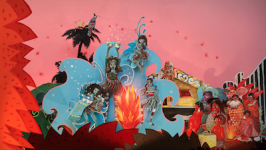
Learn the waiata and perform it at your corn hākari!
http://folksong.org.nz/ka_pioioi/index.html
Nau mai e Rongo
Learn and recite the karakia. Encourage students to recite the karakia at the start of each morning and afternoon, and before shared meals.
Focus on unfamiliar words:
- Tau
- Nau
- Āiō
- Hua
- Rehua
Syllable Activities
The Syllable Hop
- Explain that everyone will hop in time with the syllables of a word.
- Remind them what syllables are and model the activity.
- Depending their understanding, this could be a shadow activity – you say the word, model it, and then have them copy what you did.
- Use words from the karakia.
Syllable Number Run
- Take this game outside.
- Place a 1 in one area, a 2 in a different spot, and a 3 in a third spot.
- Shout a word and have them run to the number that represents the correct number of syllables.
- Say the word slowly, broken down into syllables.
Syllable Claps
- Start by clapping the syllables for Rongomātāne, i.e. Ro-ngo-mā-tā-ne. Ask the students to clap along with you … slowly!
- Students stand in a circle. Go around the circle clapping out the syllables in everyone’s names. Make sure everyone knows how many syllables are in their name.
Make a line of students based on the syllables in their names! I.e. “Get into the line if you have 1 syllable in your name … get into line if you have 2 syllables in your name … etc.
“If you have 1/2/3 … syllables in your name, please get in line.”
- You could do this exercise when you are getting ready to go outside, going to lunch etc.
He kai kei aku ringa
- Practice the whakataukī with the whole class and learn it by heart. Talk about what it means and when it can be used.
- Students draw around their hand and forearm on a large sheet of paper and colour it in with crayons and/or felt pens.
- Glue the hand/arms around the edges of a larger piece of paper that has the whakataukī on it – He kai kei aku ringa.
Possible Assessment Opportunities
Students can:
- Recite a whakapapa that includes Ranginui and six of their children.
-
Students participate in class art review. Students review their own artwork by answering these questions (or others):
- What did you enjoy most about this art activity?
- What do you like the most about your artwork?
- What new thing did you learn from doing this artwork?
Kānga
Ngā Kōhine e Toru

- Read the story, Ngā Kōhine e Toru, to your students.
In the journal, Te Whakatipu Kānga, pages 3–9 (item number 710880).
Also available as an App, or PDF:
http://hana.co.nz/online/te-whakatipu-kanga/
Te Whakatipu Tauawhiawhi
- Talk about companion planting andread the story Ngā Kōhine e Toru again.
- Make planters from $1 buckets with holes drilled in the bases. The children can fill them themselves putting stones in the bottom, then potting mix/compost and straw on the top as a mulch.
- They can make their own watering cans from 2L milk bottles with holes in the lid.
- Make vegetable garden markers from flat stones – paint a picture of the vegetable on the stone and /or write name with permanent marker.
- Plant beans, kamokamo and corn together. Alternatively, students can plant their seeds into old egg cartons filled with potting-mix and plant into a garden later.
- Students leave the planters in a sunny place and water regularly.
- The beans use the corn to climb up; the kamokamo shades the ground helping to keep the ground moist in the hot summer months; the beans fix nitrogen in the soil.
- Te Whakatipu Kānga has instructions for growing corn.
Note
- The beans use the corn to climb up; the kamokamo shades the ground helping to keep the ground moist in the hot summer months; the beans fix nitrogen in the soil.
- Te Whakatipu Kānga has instructions for growing corn.
He Kānga te Kai!
Try these recipes, or some of your own, and have a corn feast!
Microwave Popcorn
What you need
- Popcorn kernels
- Oil
- Salt
- Paper bags
- Small bowl
What you do
- In a small bowl, toss ½ cup of popcorn kernels, ½ teaspoon oil and a salt.
- Put popcorn into a brown paper bag. Fold the bag top down.
-
Lock the corners of the bags by folding the corners down, tearing little tabs, then folding those tabs over. (See picture.)
This prevents the bags from unraveling as the popcorn expands. - Microwave for about 2 minutes, though the exact time will depend on your microwave.
- When you notice the popping slowing down just a bit, it's about time to stop the microwave. Don’t to leave the popcorn unattended while it cooks!
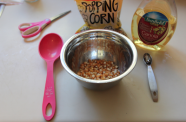
|
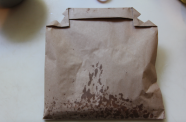
|
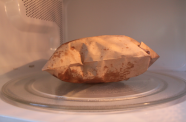
|
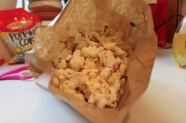
|
Corn on the Cob – stove top
What you need
- Corn cobs
- Salt
- Stock pot
What you do
- Bring a pot of salted water to the boil.
- Husk the corn and pull off all the silky threads.
- Put the corn into the boiling water. Bring water back to the boil. Put the lid on and turn off the heat.
- Leave for 10 minutes, drain.
- Serve with butter.
Or
Boil the corn in water with 100gms of butter and 1 cup of milk. Delicious!
Microwave Corn
What you need
- Corn in their husks
- Microwave
- Tea towel
- Sharp knife
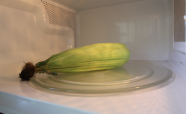
|
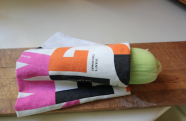
|
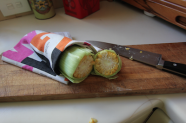
|
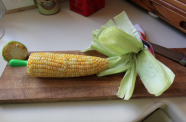
|
What you do
- Place the corn in the microwave.
- Microwave the corn on the high setting for 4 minutes.
- Use a kitchen towel or pot holder to remove corn from the microwave. Cut off the stem end of the corn, about one row of corn in from the stem.
- Slip off the husk and silk.
Barbeque Corn
Cook directly on the barbeque grill still in their husks (or without), for about 15–20 minutes.
Possible Assessment Opportunities
Students can:
- Complete an oral comprehension activity about Ngā Kōhine e Toru.
- Students can report on the different stages involved in growing a companion garden. This could be orally with photographs, pictures or story stones as prompts.
- Students can perform the karakia and waiata as a class at the ‘Corn Feast’.
- Students can sequence photographs to recount steps in making a recipe.
- In pairs, students can make an oral presentation along with food they have prepared for a hākari.
